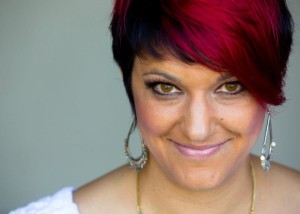A interview post with Jen Greyson.
Yesterday, I posted the first of my two sit-down posts with author Jen Greyson, author of Lightning Rider and Shadow Boxer. Her publishing story began a couple of years ago upon selling her first novel to a publisher—and not just any publisher, but The Writer’s Coffee Shop, the company behind Fifty Shades of Grey. Here’s the interview’s conclusion.
EB: What kind of marketing went into your book’s release?
JR: Press release and a blog tour, social media on launch day. I devoted a ton of time into finding bloggers to review/tour for this book, so both sides worked pretty hard on this launch. I also did a big launch party and the publisher sent me bookmarks and fliers for advertising.
EB: What were your biggest turnoffs in the traditional publishing experience?
JR: In a nutshell, I gave up a lot and got very little in return. I bought into the myth of traditional publishing (though I’m not sure if I can even call this a “traditional” deal, because they were basically a small-press). I figured once I had a contract I’d ‘made it’ and everything would be a piece of cake from there. Boy, was I wrong. I still had to devote a ton of time and energy into sales. As I did the math, it became obvious very early on that I could do the same amount of work as an indie and make a lot more money. (This was a royalty-only deal.)
At the time I released Lightning Rider, NA (new adult) was really gaining traction and the publisher didn’t know how to market NA (or fantasy) because they’d never had one. They were really open to my suggestions, and that was great, but I’d chosen them because I thought they had some marketing “secret.” In the end, I picked a publisher that was a bad fit for my book, but I wanted to be published so badly that I overlooked a lot of red flags.
EB: After the release, how were your sales?
JR: Sales were nowhere near the Fifty Shades numbers I’d hoped for! 🙂 That ended up working in my favor, though, because of a clause I negotiated that specified that if I didn’t sell a certain number of books within the first six months, the contract could be terminated.
EB: Did you take any “missteps” along the way that you would caution other writers about?
JR: Don’t be so eager to get published in the short-term that you overlook the long-term. One book is nothing in terms of a writer’s career. (I’m hoping for another thirty-five years!) It was really hard for me to be unbiased about the deal, and if I’m truly honest, I don’t think anyone could have talked me out of signing with them. I wanted to be published. And because of that craving/desire/crippling need, I wasn’t as smart as I should have been. I wasn’t realistic about what a first book by a first-time author was going to do. I believed I was the exception to the rule.
EB: After having pursued traditional publishing, what are you doing now? How has the experience influenced your career path?
JR: Right now, I’m self-pubbing all my titles, and that’s probably the plan for 2014. Interestingly, the workload hasn’t changed, but my royalty checks have! And because I’m trying to expose myself to readers in a genre dominated by indies (NA), I need to be able to drop titles every three months. I can’t afford to wait eighteen months for a traditional deal—not right now, and not with my NA titles.
I’m definitely not opposed to doing a traditional deal in the future, but now that I’m out from under the myth of traditional publishing I think I can make a much more educated decision. I also have a better understanding of what goes into getting each book into readers’ hands, and I know how to budget and value my own time in the equation.
My path isn’t necessarily what’s right for anyone else. Writers need to do their homework. Talk to other authors who’ve been there, seek counsel, be smart. And in the wise, wise words of James Owen: “Never, ever, sacrifice what you want the most, for what you want the most at that moment.”
 Guest Bio:
Guest Bio: From the moment she decided on a degree in Equestrian Studies, Jen Greyson’s life has been one unscripted adventure after another. Leaving the cowboy state of Wyoming to train show horses in France, Switzerland, and Germany, she’s lived life without much of a plan, but always a book in her suitcase. Now a wife and mom to two young boys, she relies on her adventurous, passionate characters to be the risk-takers. Jen also writes university courses and corporate training material when she’s not enjoying the wilds of the west via wakeboard or snowmobile.
